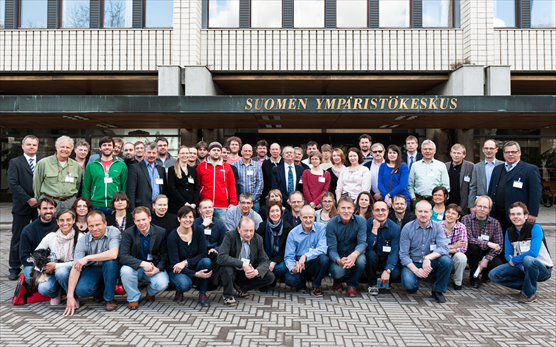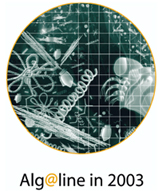Project objectives and background
The Alg@line -project was generated in 1993 to improve the coverage of existing pelagic monitoring in the Baltic Sea. The temporal and spatial frequency of the collected data in the old monitoring programmes were far too sparse to reveal the possible changes in this highly fluctuating, patchy ecosystem. However, it was not possible to increase the sampling frequency by using traditional sampling techniques i.e. the expensive use of research vessels. The SOOP approach i.e the ‘ship-of-opportunity platforms’ facilitate the adequate monitoring of highly fluctuating pelagic ecosystem; It offered an extensive and inexpensive automated sampling method on board merchant ships. This meant a fundamental change in phytoplankton monitoring as the ‘few-station’ sampling on board research vessels was extended to SOOP sampling.
As the high heterogeneity of the plankton ecosystem is known the automated sampling is able to give more adequate information on plankton communities by taking the spatio-temporal dimensions better into account. In the Baltic Sea the main bulk of phytoplankton biomass occur in the euphotic layer with no distinct pycnocline and the sea is densely plied by merchant ships with regular schedules. Based on this the SOOP technique offered a sound tool to improve the frequency of pelagic monitoring.

Phytoplankton cells.(.jpg, 330 kb)
The extensive SOOP phytoplankton data set forms the basis for research of ecological characteristics of species and to reveal changes in phytoplankton species compositions. The comprehensive monitoring is also a prerequisite for the detection of possible invasions of new and potentially harmful plankton species. In addition the continuously measured hydrographical parameters give valuable high frequency information of the water masses. The hydrographical processes, such as upwelling, strongly regulate the plankton patterns. The data has also shown its value in validation of ecological and hydrodynamical models and as a reference data for optical remote sensing measurements.
5th FerryBox Workshop 2013 took place in Finland
Celebrating 20 years of the Alg@line – Real time algal monitoring in the Baltic Sea - the 5th FerryBox Workshop took place in April 2013 at the Finnish Environment Institute in Helsinki, Finland.
Alg@line is a part of the FerryBox community, which wants to improve and share the data and combined knowledge generated from the 'ship-of-opportunity platforms' (SOOP). The SOOP approach facilitates the monitoring of the highly fluctuating pelagic ecosystem through an extensive automated sampling method on board merchant ships.

The participants of the 5th FerryBox -workshop in Helsinki in April 2013.
Current Alg@line measurements
The assembly of the equipment varies according to ferry.
Measured parameters onboard
in vivo fluorescence of chlorophyll a, phycocyanin fluorescence, cdom fluorescence, salinity, temperature
Subsequent laboratory analyses
chlorophyll a, phytoplankton species composition, nutrients (phosphate, total phosphorus, ammonium, nitrate, total nitrogen, silicate), turbidity
Ferries and routes
m/s Finnmaid (SYKE) Helsinki–Travemünde
m/s TransPaper (SYKE & SMHI) Oulu–Kemi–Lübeck
m/s Silja Serenade (SYKE) Helsinki–Stockholm
m/s Finnsea (SYKE) Kotka–Århus
m/s Baltic Queen (MSI) Tallinn–Helsinki
m/s Silja Victoria (EMI) Tallinn–Stockholm
Publications
|
|


(.pdf, 5 mb)
|
More information
Seppo Kaitala
Finnish Environment Institute
firstname.surname@syke.fi
tel. + 358 503506803
Data access is partially supported by JericoNEXT EU-project.